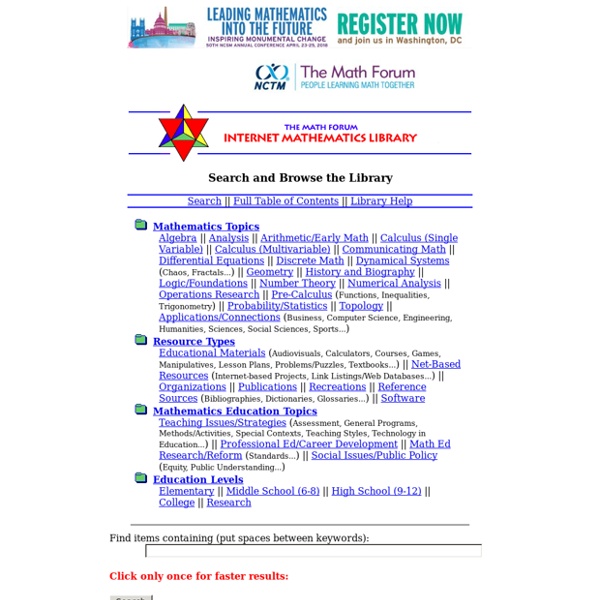



Challenge Math Online: An Online Program for Gifted, Talented and Promising Math Students I am very excited about Challenge Math ... The fact that the problems are chosen carefully to work on developing the skills of the kids that excel in math and to prepare them for national and international competitions is invaluable. There is little of this in school, so we intend to take full advantage of the program in the future. - Dr. Stanislavova Associate Professor, MathematicsUniversity of Kansas Welcome to Challenge Math Online Math Contest for Elementary and Middle School Students Julia M. Hilldale Elementary, OK . We look forward to participating in the contests again next year." MIT Mathematics In mathematics you don't understand things, you just get used to them. - John von Neumann PRIMES includes three sections: MIT PRIMES is a free year-long after-school program that offers research projects and guided reading to high school students living within driving distance from Boston. Program participants work with MIT researchers on exciting unsolved problems in mathematics, computer science, and computational biology. PRIMES-USA is a free year-long distance mentoring math research section for high school juniors from across the United States (outside of Greater Boston). PRIMES Circle is a free spring-term math enrichment section for high school students from underrepresented groups living within commuting distance from Boston.
Math In The Real World: 400 Examples, Lessons, & Resources Read Math In The Real World: 400 Lessons From EconEdLink by TeachThought Staff Math for Love In the run up to the upcoming year of Math Teacher Circles, we decided to offer a kickoff workshop for 4th – 8th grade teachers to drum up some excitement for the upcoming year. (The “we” in this case is myself, from Math for Love, and Jayadev Athreya of the Washington Experimental Math Lab, run through the UW.) This partnership (M4L + WXML) led a series of eight Math Teacher Circles last year, for K – 8th grade teachers, and they were great. The model is one of my favorites: teachers opt in to meet once a month to study topics in math and pedagogy, then try things out in their classroom between sessions. The circles are a fantastic way to meet and collaborate with colleagues from other schools, focus on fascinating and critical issues in math teaching, and energize your practice. They’re also free!
Paul's Online Math Notes Before we get into surface integrals we first need to talk about how to parameterize a surface. When we parameterized a curve we took values of t from some interval and plugged them into and the resulting set of vectors will be the position vectors for the points on the curve. With surfaces we’ll do something similar. We will take points, Top 100 Math Blogs for Students and Mathematics Teachers 1. Math Only Math Kolkata About Blog Math Blog by Priyanka Ghosh having experience in teaching Mathematics for the past ten years in –Kolkata, India. Presenting math-only-math to kids, students and children. Vector Functions We first saw vector functions back when we were looking at the Equation of Lines. In that section we talked about them because we wrote down the equation of a line in in terms of a vector function (sometimes called a vector-valued function). In this section we want to look a little closer at them and we also want to look at some vector functions in